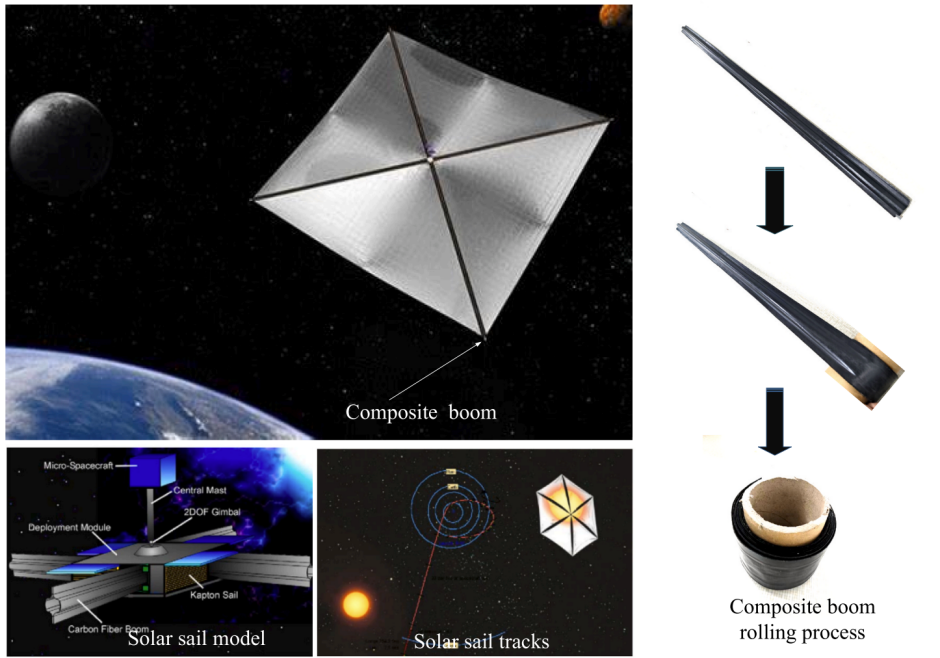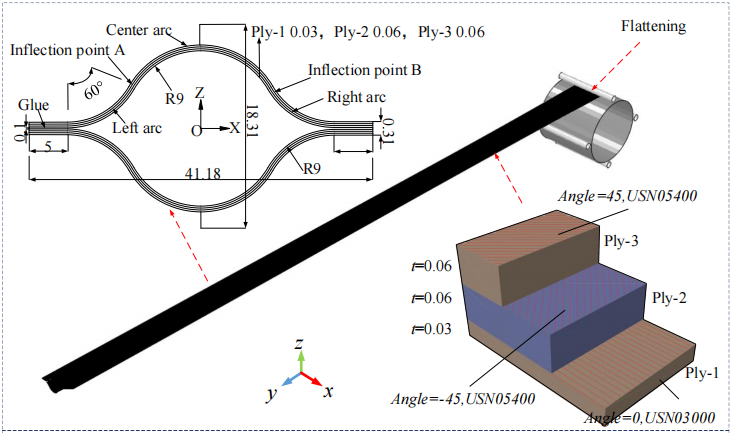Solar sails utilize the subtle pressure of sunlight for propulsion. When photons strike the reflective surface of the sail, they impart a tiny amount of momentum, gradually propelling the spacecraft through the vacuum of space.

Application of Space Deployable Composite Thin-Walled Structures in Solar Sails(Image by the research group)
To achieve high packing ratios, solar sails often rely on thin-walled structures made of Carbon Fiber Reinforced Polymer (CFRP) to support the expansive sail membrane. However, these deployable thin-walled structures exhibit significant nonlinear mechanical behavior during the coiling and deployment processes. Ensuring buckling stability during deployment and preventing fracture failure in the thin walls represent major technical challenges.
Recently, researchers at the Shenyang Institute of Automation (SIA), Chinese Academy of Sciences (CAS), developed a novel, small-scale cross-section, lightweight, and high-stiffness deployable composite thin-walled structure. The researchers employed a comprehensive methodology integrating theoretical modeling, simulation analysis, and experimental validation to systematically simulate the structure's nonlinear mechanical behavior throughout the coiling and deployment phases.


Numerical Simulation of Space Deployable Composite Thin-Walled Structure Retraction (Image by the research group)
Simulation result demonstrates that the proposed mechanical analysis model can effectively predict the stress distribution characteristics and potential failure modes within these deployable composite thin-walled structures. This predictive capability provides crucial technical support for optimizing the stability design of solar sail support structures and enhancing their overall dynamic performance.
This work was published in international journal Composite Structures under the title Study on the nonlinear rolling behavior of small-scale thin-walled composite deployable structures. Yuxin Li, a graduate student at SIA, is the first author of the paper, and Haitao Luo, a researcher from SIA serving as the corresponding author.
Link to paper: https://doi.org/10.1016/j.compstruct.2025.119191